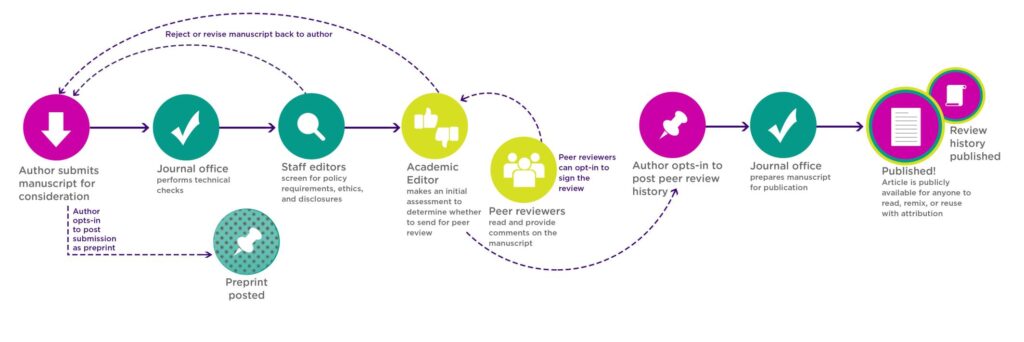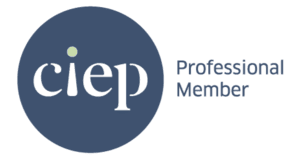Double-blind peer review is a process used in academic publishing where both the identities of the authors and the reviewers are kept hidden from each other. This means:
- The authors submitting their manuscript do not know who is reviewing their work.
- The reviewers evaluating the manuscript are not aware of the identity of the authors.
This approach aims to eliminate bias that could arise from factors such as the authors’ reputation, institutional affiliation, gender or any other identifiable information. It ensures that the review is based solely on the content and quality of the work, promoting fairness and objectivity in the evaluation process.
This article will guide you through the double-blind peer review process. It will explore the pros and cons of double-blind review, discuss its role in the academic publishing timeline, and provide practical advice on how to prepare your manuscript effectively. Additionally, it will highlight the importance of professional editing services in enhancing your manuscript’s quality and ensuring it meets the requirements of double-blind review.
- Double-blind vs single-blind vs open peer review
- Pros and cons of double-blind peer review
- When does the double-blind peer review take place?
- How can editing services prepare a text for double-blind peer review?
What is the difference between double-blind, single-blind and open peer review?
The main differences between double-blind, single-blind and open peer review lie in how much anonymity is maintained between authors and reviewers:
Double-blind peer review
In double-blind peer review, the authors and reviewers are anonymous to each other. This aims to prevent bias from either party. Moreover, it ensures that the review is based solely on the manuscript’s content, without influence from the author’s identity or background.
Single-blind peer review
In single-blind peer review, the reviewers know the identity of the authors, but the authors do not know who the reviewers are. This is the most common type of peer review. It helps protect reviewers from potential backlash from authors. At the same time, it allows reviewers to assess the work, knowing who the authors are, which could influence their evaluation for better or worse.
Open peer review
- Anonymity: There is no anonymity; the authors and reviewers know each other’s identities.
- Purpose: Open peer review promotes transparency in the review process. It can encourage reviewers to be more constructive in their feedback, knowing their comments are attributed to them. It also allows the scientific community to see who reviewed the work and how it was assessed.
What are the pros and cons of double-blind peer review?
Pros of double-blind peer review
- Reduction of bias: Double-blind review minimises the potential for bias based on the author’s gender, institution or country of origin. Thus, it allows the work to be judged on its merits rather than the author’s background. Furthermore, it prevents the reviewers from being influenced by the reputation of the authors.
- Increased fairness: Reviewers may be more likely to provide honest and constructive feedback when unaware of the author’s identity, leading to a fairer review process.
- Increased confidence: Authors may feel more confident that their work is being evaluated solely on its content, especially if they are early in their careers or from less well-known institutions.
Cons of double-blind peer review
- Difficulty in ensuring anonymity: In some fields, it can be challenging to anonymise a manuscript fully. For instance, this may be the case if the work is very specialised or if the authors have previously published on the same topic. Moreover, reviewers may still make assumptions about the authors based on the content, methodology or references.
- Increased administrative burden: Ensuring the review process remains double-blind can be administratively challenging and time-consuming for journals.
- Limited transparency and accountability: Since reviewers are anonymous, there may be less accountability for the quality and constructiveness of the reviews, potentially leading to unfair or overly critical feedback.
- No recognition for the reviewers: Reviewers do not receive public recognition for their work, which might reduce the incentive to engage in the review process and provide high-quality reviews.
- Self-citation and style: Authors’ writing styles or self-citations may reveal their identity to experienced reviewers.
When does the double-blind peer review happen in the academic publishing process?
In the academic publishing process, whether for a journal article or a book monograph, the double-blind peer review typically occurs after the initial submission of the manuscript but before the final acceptance for publication. Here is where it falls in the process:
For journal articles
- Manuscript submission: The author(s) submit their manuscript to the journal.
- Initial editorial review: The journal editor or editorial board conducts an initial review to ensure the manuscript fits the scope of the journal and meets basic quality standards. As a result, the manuscript may be rejected or sent for peer review at this stage.
- Double-blind peer review:
- After passing the initial editorial review, the manuscript finds its way to one or more external reviewers.
- The authors’ and reviewers’ identities are confidential during this stage.
- Reviewers assess the manuscript’s quality, originality, methodology and significance, providing feedback and recommendations (e.g. accept, revise or reject).
- Revision and resubmission: Based on the reviewers’ comments, the authors may need to revise their manuscript. Next, the revised manuscript may go through another round of double-blind peer review.
- Final editorial decision: The editor, considering the reviewers’ feedback and the revised manuscript, makes a final decision on whether to accept the manuscript for publication.

journals.plos.org
For book monographs
- Proposal submission: The author(s) submit a book proposal to a publisher, often including sample chapters.
- Initial editorial review: The publisher’s editor reviews the proposal to determine if it fits the publishing house’s scope and has potential market value. Then, if accepted, the proposal undergoes peer review.
- Double-blind peer review:
- The proposal and sample chapters are reviewed by experts in the field who do not know the identity of the author(s) and vice versa.
- Reviewers provide feedback on the book’s scholarly contribution, structure and marketability.
- Author revisions: Based on the reviewers’ comments, the author may be asked to revise the proposal or manuscript.
- Final decision: The publisher makes a final decision to proceed with a contract. This decision often depends on further peer review of the full manuscript after it is completed.
- Full manuscript review: After the full manuscript is completed, it may undergo another round of peer review before final acceptance.
How can editing services help prepare a manuscript for double-blind peer review?
Preparing an article or book manuscript for double-blind peer review involves ensuring the content quality and lack of identifiers compromising anonymity. Engaging professional editing services can significantly enhance the manuscript’s readiness. Here is how different types of editing contribute:
Developmental editing
Developmental editing is the most comprehensive form of editing, focusing on the text’s overall structure, content and coherence. First, developmental editors assess and reorganise the manuscript to ensure logical flow and clarity of arguments. Furthermore, they identify gaps in research and suggest areas for expansion or reduction. Moreover, developmental editor ensure that the thesis or central argument is compelling and well-supported. Finally, developmental editors can help authors remove or rephrase content that might inadvertently reveal their identity. These instances may include self-referential statements or acknowledgements.
Line editing
Line editing involves a detailed review of the manuscript’s language and style at the sentence and paragraph levels. Contributions of this service include refining sentence structures for clarity and ensuring that the writing is concise and coherent. Moreover, line editors align the manuscript’s tone with the target audience and publication standards. In addition, line editors can spot and modify phrases or references that might hint at the author’s identity, maintaining double-blind integrity.
Copyediting
Copyediting addresses grammatical, punctuation and stylistic errors, adhering to specific style guides. For instance, copyeditors rectify grammatical mistakes, incorrect punctuation and inconsistencies in spelling (ensuring US English usage, for instance). Moreover, they ensure that headings, citations and references adhere to the required style guide. This step is crucial for maintaining professionalism. Finally, copyeditors can help anonymise self-citations, if necessary, by formatting them in a way that does not reveal authorship.
Proofreading
Proofreading is the final check before submission, concentrating on minor errors overlooked in previous editing stages. For instance, proofreaders catch typographical errors, misspellings or minor formatting issues. Last, they perform a last-minute scan to ensure no inadvertent identifiers remain. These may include metadata in electronic files or overlooked self-references.
Peer review resources
- Elsevier Author Resources provides comprehensive guidelines on preparing manuscripts for submission, including specific advice on anonymising text for double-blind peer review.
- Wiley Author Services offers resources on manuscript preparation, with a section dedicated to ensuring anonymity in double-blind peer review.
- Taylor & Francis Author Services includes a detailed guide on how to prepare your manuscript for double-blind peer review, covering the removal of identifiers and more.
- Peer Review by APA provides a step-by-step guide to anonymising a manuscript, particularly useful for psychology and social science authors.
- Peer Review Presentation by Purdue OWL includes practical advice on ensuring your manuscript remains anonymous.
- The Academic Writer’s Handbook by Leonard J. Rosen. This is a resource for understanding various aspects of academic writing, including sections on manuscript preparation and considerations for peer review.
- Writing for Peer Reviewed Journals: Strategies for Getting Published by Pat Thomson and Barbara Kamler. This book offers insights into the entire publishing process, including preparing your work for double-blind review.
Key takeaways
Double-blind peer review plays a vital role in maintaining the integrity of academic publishing by ensuring that manuscripts are judged solely on their content. For authors, this process offers an opportunity to have their work evaluated without the influence of personal or institutional biases. However, it also requires careful preparation to maintain anonymity. Ensuring that their submission is free of identifying information, well-organised and professionally polished will not only help protect the integrity of the review process. It will also enhance the overall quality and impact of the work in the scholarly community.
If you are an academic author looking to publish your work and need editing or indexing services, contact me. I am an experienced editor, and I offer a free sample edit and an early bird discount.

